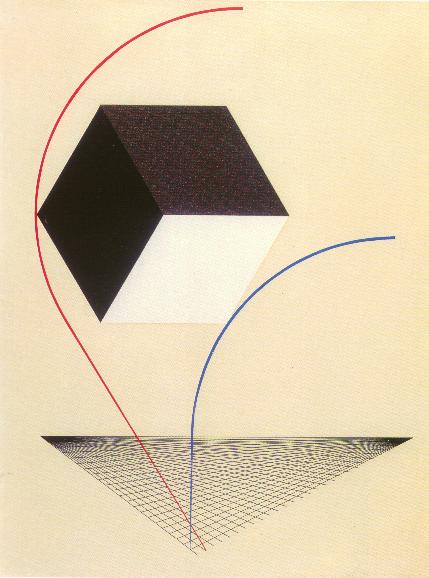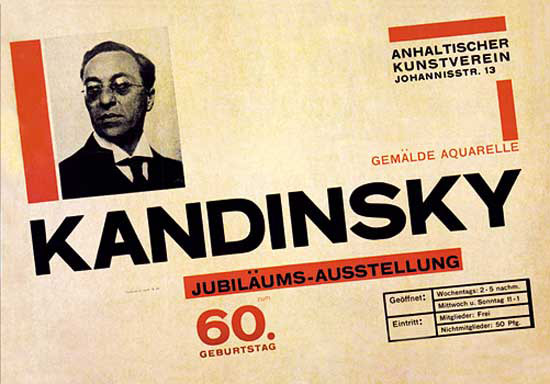Lazar Markovich Lissitzky (Ла́зарь Ма́ркович Лиси́цкий) (November 23 1890 – December 30, 1941), better known as El Lissitzky (Эль Лиси́цкий), was a Russian artist, designer, photographer, typographer, polemicist and architect. He was an important figure of the Russian avant garde, helping developsuprematism with his mentor, Kazimir Malevich, and designing numerous exhibition displays and propaganda works for the Soviet Union. His work greatly influenced the Bauhaus and constructivist movements, and he experimented with production techniques and stylistic devices that would go on to dominate 20th-century graphic design.
Lissitzky's entire career was laced with the belief that the artist could be an agent for change, later summarized with his edict, "das zielbewußte Schaffen" (goal-oriented creation). Lissitzky, of Jewish оrigin, began his career illustrating Yiddish children's books in an effort to promote Jewish culture in Russia, a country that was undergoing massive change at the time and that had just repealed itsantisemitic laws.
When only 15 he started teaching; a duty he would stay with for most of his life. Over the years, he taught in a variety of positions, schools, and artistic media, spreading and exchanging ideas. He took this ethic with him when he worked with Malevich in heading the suprematist art group UNOVIS, when he developed a variant suprematist series of his own, Proun, and further still in 1921, when he took up a job as the Russian cultural ambassador to Weimar Germany, working with and influencing important figures of theBauhaus and De Stijl movements during his stay.
In his remaining years he brought significant innovation and change to typography, exhibition design, photomontage, and book design, producing critically respected works and winning international acclaim for his exhibition design. This continued until his deathbed, where in 1941 he produced one of his last works – a Soviet propaganda poster rallying the people to construct more tanks for the fight against Nazi Germany. In 2014, the heirs of the artist, in collaboration with Van abbemuseum and the leading worldwide scholars, the Lissitzky foundation was established, to preserve the artist's legacy and preparing a catalogue raisone of the artist oeuvre.
"We consider the triumph of the constructive method to be essential for our present. We find it not only in the new economy and in the development of the industry, but also in the psychology of our contemporaries of art. Veshch will champion constructive art, whose mission is not, after all, to embellish life, but to organize it."
A Proun by Lissitzky, c.1925.
Commenting on Proun in 1921, Lissitzky stated, "We brought the canvas into circles. . . and while we turn, we raise ourselves into the space."
I am particularly interested in typographic work that Lissitzky has produced...
The way that Lissitzky experiments with the layout and composition of his typography was particularly inspiring and contributed to the design choices of my publication. I was particularly interested in his design work that used Russian Cyrillic alphabet and fonts that contain this, rather than his work written in German or similar, as this was a lot more culturally inspired and reflective of the time.
- Leave your comment • Category: brief 1 (505), OUGD505
- Share on Twitter, Facebook, Delicious, Digg, Reddit






